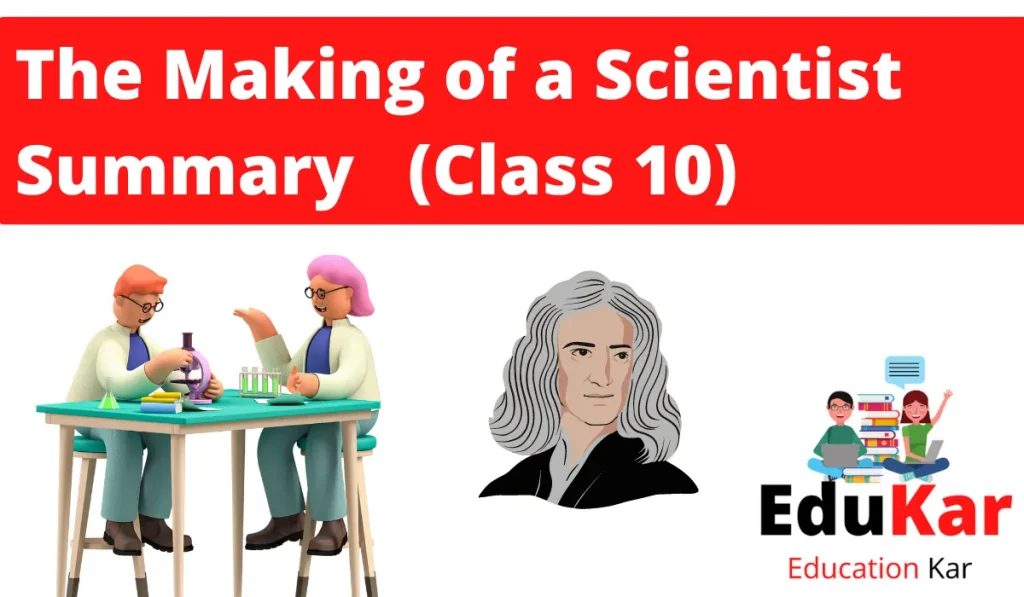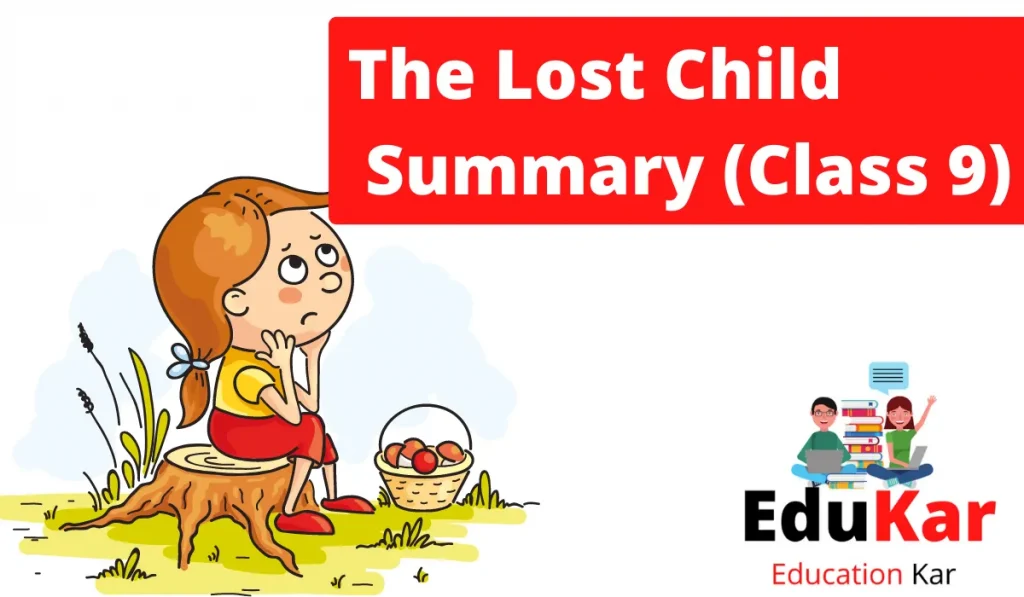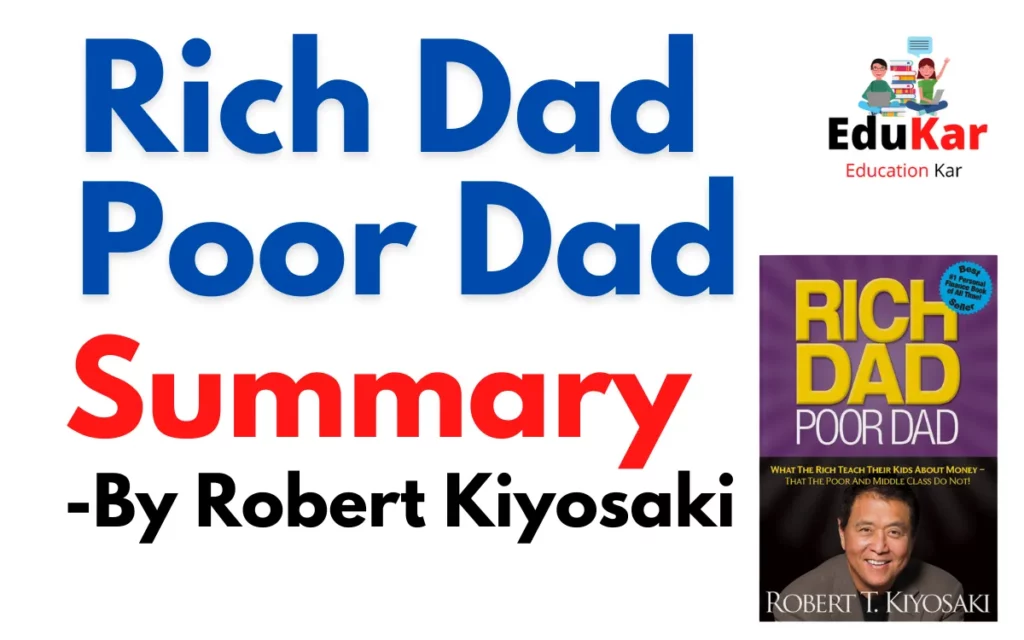Contents

| Name | The Making of a Scientist |
| Type | Summary |
| Class | 10 |
| Board | CBSE Board |
| Author | Robert W. Peterson |
Quick Introduction About “The Making of a Scientist”
Chapter 6 of the category class 10 English Supplementary Reader – Footprints Without Feet, contains of a prose – The Making of a Scientist which is about a odd child, Richard Ebright and his sail of becoming a great scientist. His mother further helped him in increasing his interest in science. Here’s the prose summary of this chapter described in CBSE English Note Class10 format. CBSE Class 10 children’s can have a glance at the prose summary of The Making of a Scientist here. They can check the CBSE Class 10 English essay Notes –The Making of a Scientist while gearing up for his or her Board exams.
Students can also practice CBSE Essays on many topics to enhance their writing section for the English examination.
Short Summary- “The Making of a Scientist”
The Making of a Scientist was write down by Robert W. Peterson. This prose is about a famous scientist, Richard Ebright who was a intelligent yet curious child from the first years of his life. He was very fond of collecting butterflies & when he was in 2 grade, he had already collected 25 species of butterflies in his urban area. His mother always uplift him in his efforts & gifted him a book named ‘The Travels Of Monarch X’.
The book was a turning point in his life because it opened the globe of science to him. It explained how monarch butterflies would migrate to Central America and made him more needing to explore about the species. Soon, he participated within the county science fair and understood that he needed to do something exceptional. He continued along with his efforts until he made an area for himself in the fair with valid experiments.
Later in his 8 grade project, he tried to get the disease caused by a virus that nearly killed most of the monarch caterpillars each year. Ebright assumed that a beetle could also be the carrier of the disease, so he started breeding caterpillars together with beetles. However, he didn’t get any conclusion from this experiment. Nevertheless, he exhibited this experiment within the county science fair & won the competition that year.
During the second year of highschool, Ebright started his research about the invention of a mysterious insect hormone, which lead the way to his brand-new theory on the life of cells. His experiment was to seek out the main purpose of the twelve tiny golden spots on a monarch pupa. His project won first prize during a county science fair and he got a chance to figure at the entomology lab in Walter Reed Army Institute of Research.
As a junior in highschool, he went on together with his upgraded experiments on the monarch pupa and eventually was successful in identifying the chemical structure of hormones. One fine day, while he was examining the X-ray photos of the chemical structure of a hormone, he acknowledge how the cell could ‘read’ the blueprint of its DNA.
Ebright & his room-mate in college, James R. Wong, worked day & night and drew pictures & constructed plastic models of molecules to show how DNA works. This was a significant leap in Ebright’s career as he secured a graduation degree from Harvard with the highest honours & stood 2 in an exceedingly class of 1,510 students. His work was also published during a science magazine. Soon, he became a graduate student researcher at Harvard Medical School and commenced functioning on other experiments.
Richard Ebright was a straight-A student in highschool. Besides, he took interest in discussion, speech and was also a good canoeist and an all-rounder outdoor person. He always had a competitive nature and zeal to relinquish his best to everything that he put his hands into. Out-and-out, he had all the key ingredients of a superb scientist starting with a first-rate mind blended with curiosity and a mixture of will-power to win for the proper reasons.
About The Author
The Making of a Scientist is that the 6th chapter within the class 10 English NCERT book Footprints Without Feet. The writer of The Making of a Scientist is Robert W. Peterson and it’s based on the real-life of a teenage scientist Richard H. Ebright.
Conclusion- “The Making of a Scientist”
In the chapter – The Making of a Scientist teaches Class 10 students that we should always be perseverant & dedicated towards our work. This may help us in achieving our dreams & would bear the fruits of our labor some day, sooner or later. We hope this CBSE Class 10 English Footprints Without Feet brief Summary of The Making of a Scientist will facilitate you to have a thorough understanding of the chapter. Meanwhile, you can visit edukar.in to access resources on CBSE Notes and CBSE Study Material & etc. for your Board exams preparation. You can also visit our website edukar.in for educational content.




![The Beggar Summary in English [Class 9-Chapter 10 ] The Beggar Summary in English](https://edukar.in/wp-content/uploads/2022/10/The-Beggar-Summary-Class-9-English-1024x536.webp)
![The Snake Trying Summary [Class 9] The Snake Trying Summary](https://edukar.in/wp-content/uploads/2022/09/The-Snake-Trying-Summary-1024x597.webp)


![Two Stories About Flying Summary [CBSE Class 10] By Liam OH Hearty Two Stories About Flying Summary](https://edukar.in/wp-content/uploads/2022/10/Two-Stories-About-Flying-Summary-1024x536.webp)


![No Men Are Foreign Summary [CBSE Class 9] By James Falconer Kirkup No Men Are Foreign Summary](https://edukar.in/wp-content/uploads/2022/10/No-Men-Are-Foreign-Summary--1024x536.webp)
![Weathering The Storm In Ersama Summary [CBSE Class 9] by Harsh Mander Weathering The Storm In Ersama Summary](https://edukar.in/wp-content/uploads/2022/10/Weathering-The-Storm-In-Ersama-Summary-1024x536.webp)


![Grandma Climbs A Tree Summary [Class 10] By Ruskin Bond Grandma Climbs A Tree Summary](https://edukar.in/wp-content/uploads/2022/09/Grandma-Climbs-A-Tree-Summary-1024x597.webp)
